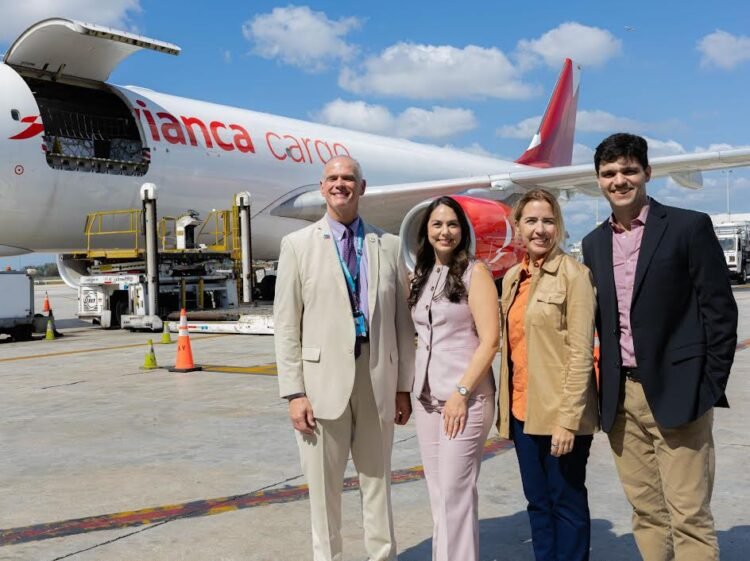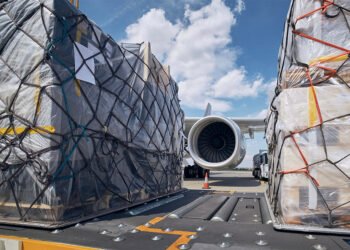vianca Cargo has marked a major milestone during the 2025 Mother’s Day season, transporting more than 20,100 tons of fresh flowers from Colombia and Ecuador to destinations across North America and Europe. Representing a 15% increase in volume year-over-year, the achievement underscores the airline’s continued dominance in the floral logistics sector—and cements its role as the leading flower carrier from Colombia to the United States.
The seasonal surge was powered by 300 dedicated cargo flights, a scale of operation made possible by significant increases in capacity and strategic infrastructure enhancements at key terminals. Avianca Cargo’s logistics footprint—anchored by Miami International Airport (MIA)—handled 24/7 flower reception and dispatch with no disruption to other cargo flows, demonstrating the company’s ability to scale with precision.
“Mother’s Day is a defining moment for the floral industry,” said Diogo Elias, CEO of Avianca Cargo. “This record-breaking season is not just a number—it’s a shared achievement across our clients, teams, and partners. It reinforces our leadership in flower logistics and reflects our long-standing commitment to service excellence.”
Miami: The Floral Gateway to the U.S.
MIA once again proved to be a critical gateway for floral imports. More than 85% of Avianca Cargo’s annual flower volumes—which totaled over 150,300 tons in 2024—were processed through Miami. With demand peaking ahead of Mother’s Day, Avianca expanded its workforce in the city by 30%, enabling faster throughput and supporting last-mile distribution across the U.S.
“Thanks to partners like Avianca, MIA has been handling over 1,000 tons of flowers daily in the lead-up to Mother’s Day,” said Ralph Cutié, Director and CEO of Miami International Airport. “Flowers remain MIA’s top imported commodity, with nearly 380,000 tons valued at $1.8 billion annually. Avianca’s record-breaking season contributes directly to our continued growth in cargo volume.”
Operational Excellence Meets Cold Chain Precision
The success of Avianca Cargo’s flower season is built on more than volume—it reflects a deep specialization in cold chain logistics. As the first airline in the Americas to achieve CEIV Fresh certification, Avianca maintains rigorous protocols for temperature control, product documentation, and risk management throughout the supply chain.
From carnations and pompons to chrysanthemums and gypsophilas, the diversity and delicacy of floral shipments demand advanced handling capabilities. Avianca’s dedicated infrastructure ensures flowers arrive in peak condition, preserving freshness from farm to florist.
To accommodate the surge, Avianca doubled its operational capacity during the season and executed around-the-clock service from its hubs in Colombia and Ecuador. These enhancements were implemented without impacting broader network performance—underscoring the company’s operational agility.
Leadership Backed by Decades of Experience
With more than 50 years in the cargo business, Avianca Cargo continues to lead not only in perishable transportation but across broader cargo verticals throughout Latin America and beyond. The flower sector, which accounts for over half of its cargo business, remains a strategic pillar.
“Almost every flower touched by a mother in the U.S. this season passed through Miami International Airport—and through Avianca Cargo,” said Miami-Dade County Commissioner Raquel Regalado. “Today we celebrate not just numbers, but the resilience, infrastructure, and partnerships that make this success possible.”
Investing in the Future of Perishable Logistics
Avianca Cargo’s historic Mother’s Day performance reflects a broader commitment to innovation, sustainability, and forward-looking growth. As it continues to scale operations, the airline is actively investing in enhanced cold chain technology, digital process automation, and cross-border partnerships to support year-round demand for perishables.
With this milestone, Avianca Cargo has not only solidified its leadership in floral logistics but also demonstrated what strategic alignment between operations, infrastructure, and market need can achieve.




